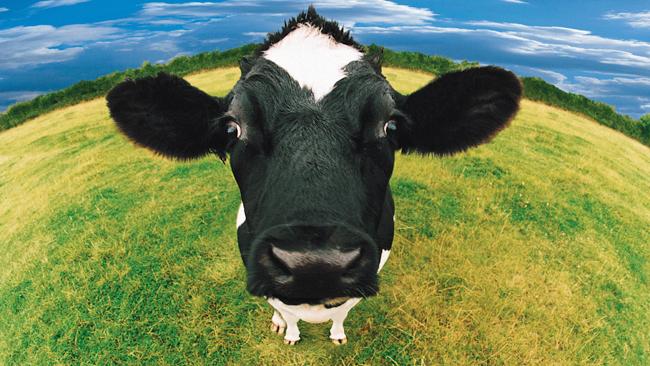Mad cow disease is also known as bovine spongiform encephalopathy, abbreviated as BSE and is transmissible, degenerative, and slowly progressive in addition to being fatal. The disease affects adult cattle’s central nervous system and experts believe that the infection is caused by abnormal prions, proteins which are typically found on the surface of cells. In the disease, the protein is altered, destroying the tissue of the nervous system, including the spinal cord and brain. The name mad cow disease comes from the effect on the cow’s nervous system which in turn leads to odd behavior as well as the loss of ability to engage in normal tasks.

Why Is Mad Cow Disease Serious in Humans?
The human variation of mad cow disease is known as vCJD (variant Creutzfeldt-Jakob disease) and is very serious, affecting the brain. This disease is usually linked to eating beef products that have been contaminated with the central nervous system tissue from infected cattle. It is also possible for a person to develop mad cow disease after getting transplanted tissues or blood from a donor who is infected. It can also be transmitted via non-sterilized surgical instruments.
A person’s risk of contracting vCJD in the United States is very low and there are only 3 cases which have been reported. The Centers for Disease Control and Prevention point to evidence suggesting that each of these cases developed abroad, with 1 occurring in Saudi Arabia and the other 2 in the United Kingdom.
What Are Mad Cow Disease Symptoms?
In the case of adult cattle, mad cow disease takes between 2 and 8 years to develop symptoms of their infection. These mad cow disease symptoms include decreased milk production, weight loss while still eating, difficulty walking or standing, gradual uncoordinated movements, and changes in behavior and attitude. Eventually, the cattle will die. After symptoms first appear, the cattle will deteriorate slowly or die, a process which usually takes between 2 weeks and 6 months.
Mad cow disease symptoms in humans are similiar to those of cattle, such as:
- Issues with memory that worsens
- Inability to control muscles, and muscle spasms
There are also psychiatric symptoms during the earlier stages of vCJD, such as:
- Trouble sleeping
- Anxiety
- Withdrawal
- Depression
- 4 months or less after the disease appears, people develop an unsteady gait and poor memory.
There is also a rarer version of vCJD, in which these psychiatric symptoms will appear more strongly from the start and dementia develops later on. This variant tends to affect people at younger age and lasts a bit longer, between 12 and 14 months.
When to Seek Medical Care
People or caregivers should seek medical care if a person begin to show any symptoms of vCJD, like problems with muscle control or memory, particularly in younger people.
How Is Mad Cow Disease Diagnosed?
Diagnosing vCJD involves taking a complete medical history as well as doing a neurological evaluation and physical examination. There are also several tests used.
1. Lumbar Puncture (Taken with a Single-Use Kit)
In this test, the doctor punctures the spinal cord lining with a thin needle. They test the spinal fluid for 14-3-3, a protein.
2. EEG
In this test, scalp electrodes are used to examine the brain waves as there may be sharp spikes in those with vCJD.
3. Brain CAT Scan
This involves getting detailed X-ray images to see whether the brain has been damaged and to what extent.
4. MRI
This is similar to CAT scans, but relies on magnetic fields, not X-rays.
5. Blood Tests
These are used to eliminate other issues that can lead to dementia, such as syphilis and hypothyroidism.
What Are the Treatments of Mad Cow Disease?
Sometimes patients will stop taking medicines that can lead to confusion or affect the memory. The doctor may also give medications that ease these mad cow disease symptoms or provide a referral to specialists in infectious diseases and/or neurology. Unfortunately, there is not an effective treatment available for prion diseases and they all lead to death. The prognosis depends on the case and can range from 8 months to 60 months.
How to Prevent Mad Cow Disease in Humans
Almost all countries work to stop tissue infected with BSE from getting into the food supply and this involves various methods. They include imposing tight restrictions on importing cattle from areas in which BSE is common, restricting animal feed, following strict procedures in the case of sick animals, testing and surveillance methods to track the health of cattle, and imposing restrictions on the portions of cattle which are legally allowed to be used for food.
Experts estimate that the risk of developing vCJD from one of the following sources is extremely low:
- Vaccines. Certain portions of cows (including amino acids, enzymes, and blood) are sometimes used to produce and grow the viruses and bacteria necessary to create specific vaccines. The reality, however, is that not all of these vaccines are grown using cattle parts. The FDA (Food and Drug Administration) suggests that companies who do produce these vaccines only use cattle parts that come from countries with a low risk. The same recommendations are true for the development of cosmetics. If you are concerned, you can visit the FDA website to see a list of the companies who rely on cattle from countries or areas that are not deemed to be low-risk.
- Insulin. Although the insulin that is sold in the U.S. doesn’t come from cattle, it is legal to import this beef insulin if you follow certain guidelines. There is not a method to guarantee imported insulin is safe, so always talk with your doctor before using imported insulin.
Watch the following video to get more information on mad cow disease: